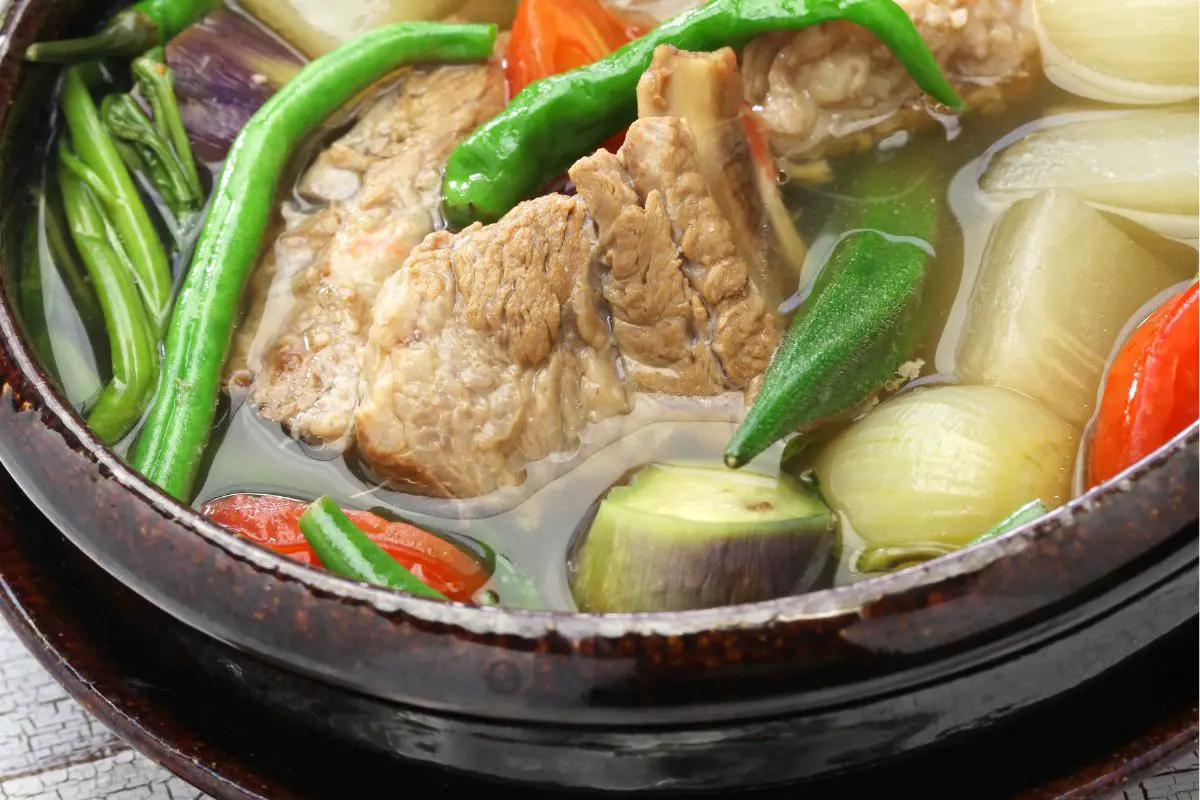From Rice Dishes to Snacks: The Ultimate Filipino Food Recipes.
From Rice Dishes to Snacks: The Ultimate Filipino Food Recipes.
Blog Article
Genuine Filipino Food Recipes to Try in your home
Discovering authentic Filipino food dishes presents a chance to value the intricate flavors and social relevance behind each recipe. From the well-loved Adobo, with its full-flavored marinate, to the appetizing Sinigang that personifies the essence of Filipino comfort, these dishes welcome a deeper understanding of conventional cooking practices. Making use of fresh, regional ingredients is crucial, as is embracing communal dining-- a hallmark of Filipino culture. As we take into consideration the essential aspects and techniques that define these culinary prizes, one might wonder what details recipes can genuinely catch the heart of this vivid cuisine.
Popular Filipino Dishes
Filipino food flaunts a rich tapestry of flavors and practices, with over a loads iconic dishes that highlight the country's diverse cultural influences. One of the most widely known recipes is Adobo, a full-flavored stew commonly made with hen or pork, marinated in vinegar, soy sauce, garlic, and spices. Its appetizing flavor profile makes it a staple in Filipino houses.
One more precious meal is Sinigang, a sour soup often made with tamarind, tomatoes, and various veggies. This meal can include pork, shrimp, or fish, and its rejuvenating taste is perfect for warm climates. For those with a craving for sweets, Leche Flan-- a luscious caramel custard-- acts as a preferred dessert, showcasing the Filipino fondness for abundant, pleasant flavors.
Kare-Kare, a hearty oxtail stew with a thick peanut sauce, together with the renowned lumpia, or spring rolls, additionally exemplify the variety found in Filipino cuisine. Each dish not only provides special preferences however additionally narrates of regional active ingredients and historic impacts, making Filipino food a dynamic representation of its culture and heritage.
Important Ingredients for Filipino Cooking
The significance of Filipino food preparation lies in its essential components, which function as the structure for the country's beloved dishes. A selection of flavors and textures integrated, showcasing the diverse social influences that shape Filipino cuisine.
Trick components include rice, the staple that comes with virtually every dish, symbolizing nourishment and neighborhood. Soy sauce, vinegar, and fish sauce (patis) are important for seasoning, imparting umami and deepness to meals. Fresh natural herbs like cilantro and basil include fragrant freshness, while garlic, onion, and ginger provide a durable flavor base.
Healthy protein resources such as pork, chicken, and seafood are main to several dishes, often marinated to improve taste. Vegetables like eggplant, bitter melon, and eco-friendly beans add crucial nutrients and balance - Filipino food recipes. Coconut milk is another significant component, offering creaminess and a subtle sweetness to different stews and treats
Lastly, calamansi, a citrus fruit, uses a rejuvenating flavor that elevates dishes and drinks alike. Together, these components create the dynamic and rich tapestry of flavors that specify Filipino food, making it both calming and distinct. Understanding these basics is crucial for any individual seeking to duplicate authentic Filipino dishes in the house.
Step-by-Step Recipe Overview

Start by preparing your components. For Adobo, slice the meat into uniform items and marinade it in soy sauce, vinegar, garlic, and bay leaves for at the very least half an hour. Next off, heat oil in a frying pan and sauté the garlic and onions up until great smelling, after that include the seasoned meat, enabling it to brownish evenly.
For Sinigang, start by boiling water in a pot and including your choice of meat. As soon as tender, incorporate tamarind paste or fresh tamarind for that trademark sour taste. Follow with veggies like radish and kangkong, cooking until simply tender.

Tips for Genuine Taste
Typically, attaining authentic flavor in Filipino dishes pivots on the mindful selection and therapy of ingredients. Begin with fresh, top notch fruit and vegetables, as the vibrancy of vegetables and herbs substantially boosts the dish's total taste. Staples like garlic, onions, and ginger form the fragrant structure for lots of recipes; click over here using them in correct proportions is vital.
Choosing the best healthy protein is equally essential. Standard adobo frequently employs poultry or pork, seasoned to absorb the sauce's complete taste. Furthermore, consider sourcing locally generated or local ingredients, as they can offer authenticity that store-bought options lack.
Food preparation strategies likewise play an important function. Slow-cooking methods, such as braising or stewing, enable tastes to fuse magnificently, while frying can include a gratifying texture. Don't forget seasoning; making use of salt, fish sauce, or soy sauce at the appropriate minutes can boost a recipe significantly.
Offering and Enjoying Filipino Food
Culinary experiences are enhanced when Filipino food is served with attention to practice and community. The method of sharing dishes is central to Filipino culture, symbolizing unity and friendliness. When serving Filipino meals, think about utilizing traditional serveware, such as clay pots or bamboo baskets, which improve the authenticity of the experience.
Typically, Filipino dishes are appreciated family-style, with a range of dishes positioned at the facility of the table. This common method motivates interaction and permits visitors to example various flavors. A well-curated spread might include staples like adobo, sinigang, and lumpia, matched by rice, which is an essential element of every meal.
Coming with the food with conventional condiments, such as soy sauce, vinegar, or chili paste, can boost the dining experience, inviting diners to personalize their plates to their preferences. Additionally, incorporating local drinks, like calamansi juice or tuba, can improve the total flavor account.
Conclusion

Report this page